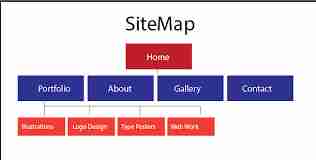Introduction
XML sitemaps are an essential part of any modern SEO strategy, as they ensure that search engines crawl and index website content effectively. However, for websites with thousands of pages, it is a really complex task to manage and optimize sitemaps. Properly structured and optimized sitemaps enhance site visibility and improve user experience by making content more discoverable.
Large websites have unique challenges in maintaining accurate and efficient sitemaps, such as handling dynamic content, managing crawl budgets, and ensuring compatibility with search engine guidelines.
1. Understanding XML Sitemaps for Large Websites

Definition and Purpose
An XML sitemap is a file that contains the URLs of a website, acting as a roadmap for search engines to discover and crawl content. It informs search engines about the structure of a site, the priority of specific pages, and the frequency of updates.
Types of Sitemaps

Index Sitemaps: Organize multiple sitemaps into a single file, essential for large websites.
Video Sitemaps: Focus on multimedia content to improve video discoverability.
Image Sitemaps: Emphasize image URLs for more effective indexing of visual content.
News Sitemaps: For timely news items and updates.
The Function of Sitemaps in Crawling and Indexing
Search engines use XML sitemaps for:
Identifying the most significant pages on a website.
Recognizing the update frequency of the pages.
Scheduling crawling according to the structure of the site and metadata of the pages.
2. XML Sitemap Management Issues for Large Websites
Problems
Sitemaps may contain large websites with the mix of both static pages and dynamic content; therefore, changes in sitemaps are relatively frequent.
Periodically updated content: News website, blogs, and e-commerce sites need the updated pages of their sites should be reflected soon in the sitemaps also.
Crawling Budget Concerns: Engines have a very limited crawl budget. Too much irrelevant information could waste the budgets in sitemaps.
POTENTIAL SEO ISSUES
Duplicate or poor-quality URLs can be included.
Broken links causing bad user experience and indexing inefficiencies.
Sitemaps too large to be processed by search engines.
3. Best Practices for Optimizing XML Sitemaps
Organizing Sitemaps for Easy Navigation
Categorization: Organize URLs into categories like products, blog posts, and multimedia.
Splitting Large Sitemaps: Split sitemaps into smaller files if URLs exceed the 50,000 limit or file size exceeds 50MB.
Using Sitemap Index Files: Index sitemaps are used to combine multiple sitemaps into a single file, making management easier.
Ensuring Quality URLs
Only include URLs that add value to users.
Exclude 404 pages, redirects, and duplicate content.
Use <priority> and <lastmod> tags to emphasize important and recently updated pages.
The Tutorial:
4. Advanced Tools for Sitemap Optimization
Tools Overview
Google Search Console: Submit and monitor sitemaps while identifying errors.
Screaming Frog: Audit large websites and generate XML sitemaps.
Yoast SEO: Automate sitemap creation for WordPress sites.
Automating Updates
Automated updating of sitemap, so the new blog post or product is crawled and indexed
Error Monitoring
Use the webmaster tools often to check on:
Erroneous issues, such as missing pages or blocked URLs
Problems crawling issues that cause errors in the performance of sitemap
5. Optimizing Sitemap Content for Better Indexing
Including Metadata
Image Metadata: Provide alt text and captions for the images in your sitemap so they can be more easily found.
Video Metadata: Include title, description, and duration for better understanding by the search engines about multimedia content.
Visual Content SEO
For highly image-based websites, optimized image sitemaps can greatly enhance visibility. Workflows for converting and sharing image files—e.g., JPG to PDF—should be smooth and indexed correctly.
6. Compatibility with Search Engine Guidelines
Adherence to Protocols
Stick to Google's XML sitemap guidelines:
Keep files under 50MB and within 50,000 URL limits.
Use UTF-8 encoding to avoid parsing errors.
Multilingual and International Sitemaps
Make use of <hreflang> annotations to manage multilingual content.
Create a separate sitemap for each language or region.
7. Periodic Auditing and Maintenance
Why Audits Are Important
Find broken links and outdated URLs.
Eliminate orphaned pages that are no longer linked from the site.
Effectiveness Tracking
Utilize analytics tools to track:
Organic traffic driven by pages in sitemaps.
Frequency of search engine crawls and indexing success.
Synchronization
Maintain sitemaps in sync with changes on the website to avoid indexing of irrelevant or outdated pages.
8. Advanced Techniques for Large Sites
Dynamic Sitemap Generation
For e-commerce sites, include dynamic sitemaps that do the following:
Automatically add new product pages.
Remove discontinued or out-of-stock items.
Separate Sitemaps for Different Content Types
Create a separate sitemap for blog posts, categories, and tags for better content organization and indexing.
Integrating Sitemaps with Structured Data
Enrich XML sitemaps with structured data (schema.org) to increase the chances of showing up in rich search results, such as product reviews or FAQs.
Conclusion
Optimizing XML sitemaps is a vital process in the enhancement of SEO performance for large websites. This will be ensured through the adoption of advanced techniques, such as dynamic generation of sitemaps, integration of structured data, and constant monitoring.
Key takeaways include the following:
Structured and categorized sitemaps enhance readability.
Automated updates through the use of tools and performance monitoring.
Follow the guidelines provided by search engines to maximize the efficiency of crawlability.
A proactive approach to sitemap management improves not only the outcomes in SEO but also provides a firm foundation for long-term success in search engine visibility.
Useful Links:
Geo-Targeting SEO for Multilingual and Multi-Regional Audiences


